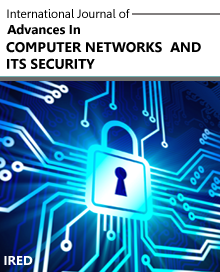Space Time Block Codes: An Overview
Author(s) : GARIMA MATHUR, GURPRIKSHA KALRA, SARITA BOOLCHANDANI
 Abstract
Abstract
The demand for mobile communication systems with high data rates has dramatically increased in recent years. New methods are necessary in order to satisfy this huge communications demand, exploiting the limited resources such as bandwidth and power as efficient as possible. In wireless communication systems, multiple antennas when used with appropriate space-time coding (STC) techniques can achieve huge performance in multipath fading wireless links and to provide diversity gain and coding gain, respectively. The use of more than one antenna at transmitting end, improves the receive diversity. Data is encoded using a space-time block code, and then split into n streams which are simultaneously transmitted using n transmit antennas. Maximum likelihood (ML) decoding is achieved by a simple way through decoupling of the signals transmitted from different antennas rather than a joint detection. When the channel is not constant during the period of codeword transmission, the conventional linear maximum likelihood receiver suffers from performance degradation. The fundamentals of space-time coding were established in the context of space-time Trellis coding by Tarokh, Seshadri and Calderbank. Then Alamouti proposed a simple transmit diversity coding scheme and based on this scheme. Our main focus is upon signal detection and channel estimation for wireless communication systems. In this paper, the receiver performance for Alamouti code is analyzed. Here, we evaluate the performances of the two channel estimation schemes when employing 2 transmit and one receive antennas employing BPSK modulation methods.
 Full Paper PDF
Full Paper PDF
